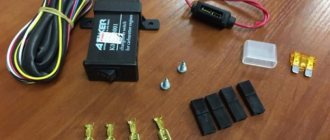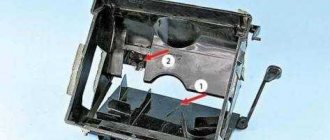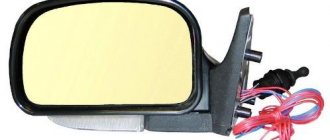Cars admin26.02.2020
Found on request: how to remove the protective cover of a UAZ Patriot fan, two video files. You will find the best video instructions and reviews of how to repair only here. The presented videos are published with photos. Enjoy watching.
Owner reviews: Spacious. The salon is simply huge, absolutely everything fits. When moving, I moved the entire apartment. A sofa, a wardrobe and all sorts of different shelves, racks and much more.
Category: Video instructions
Published by admin: at the request of Tomomi
Main video: how to remove the protective fan cover of the UAZ Patriot
Another video: how to unscrew the viscous coupling of a UAZ Patriot
Now they are reading about BMW
© Repair of foreign cars and our cars
2014 – 2020 Copying materials from a web resource without consent from the site administration is strictly prohibited.
Removing the fan and viscous coupling
• Remove the fan casing To do this, use a small screwdriver to remove the pins of the spacer clips in the upper part of the casing, remove both clips, and then lift the casing upwards.
• Unscrew the nut securing the fan to the water pump hub using a 32 mm open-end wrench.
Attention: the nut has a left-hand thread, so it must turn to the right.
• When loosening the nut, press on the water pump drive belt to keep the hub from turning. If the nut does not budge, hit the lock handle with a suitable hammer to loosen it. You can then unscrew the nut by rotating the fan impeller. Be careful not to drop the fan.
• If necessary, remove the viscous coupling. by unscrewing the four mounting bolts (indicated by arrows).
The cooling system of the UAZ Patriot engine contains an element called a “viscous coupling” or, as it is sometimes called, a “fluid coupling” - on which the fan is located. It is necessary to protect against overheating and is activated only when the engine temperature begins to exceed operating limits.
The viscous coupling on the UAZ Patriot is designed in such a way that it is connected to the engine crankshaft not directly, but through special disks, between which there is a working fluid. When starting a cold engine, the viscous coupling spins at a very low speed, much less than the number of engine revolutions.
Then, as the engine warms up, the metal plate in front of the viscous coupling heats up from the radiator and bends outward, which releases a special ball that closes the hole in the inner disk. It turns out that the working fluid has nowhere else to go and remains between the disks.
The essence of the problem
Let's start with the fact that the engineer of the Ulyanovsk Automobile Plant equips UAZ Patriot SUVs with radiator cooling fans, which are driven by a viscous coupling.
A viscous coupling is a mechanism presented in the form of two flat disks. Viscous coupling allows you to transmit torque using a special silicone-based fluid.
The operating principle consists of several plates mounted on the driven and drive shafts. They rotate in a container with liquid, which changes its properties when heated. When the liquid is mixed while the drive shaft rotates, it changes its properties (expands) and thereby creates pressure in the chamber. As a result, the disks of the driven shaft engage, causing it to move.
This viscous coupling drives the fan on the UAZ Patriot SUV. Everything would be fine if it were not for such a minus, which gives impetus to the search for its elimination. This disadvantage is that the viscosity of the liquid depends on the mixing speed. When the UAZ Patriot vehicle is braking and the engine is idling, the fluid loses its properties as a result of the rotation of the drive shaft slowing down. This causes the cooling fan to slow down and the temperature in the engine gradually rises. This phenomenon occurs when you have to stand in a traffic jam in the summer heat or move over rough terrain at low speed. Although the viscous coupling is an innovation, its use on the UAZ Patriot SUV is unsuccessful. We will look at how to eliminate the problem of engine overheating below, but for now we will list the disadvantages of using a viscous coupling.
Flying impeller blades
Disadvantages of viscous coupling
The disadvantages of using a viscous coupling on a UAZ Patriot SUV include the following factors:
- Engine temperature instability, which varies depending on crankshaft speed.
- Engine load.
- Difficult access to rollers and belts.
- There is no way to force the engine cooling fan to turn on.
- Inconsistent fan speed. It is possible that the fan blades may come off, which could result in a hole in the radiator. As a result, it becomes necessary to replace the radiator and install a new fan.
There is no way to repair it. If the product does not function, then repair is no longer appropriate and it must be replaced with a new one.
Theoretically, it is impossible to repair the product, but in practice it is possible. To do this, two holes are drilled in the viscous coupling hole, through which bolts are threaded and fixed to the drive disk. This repair allows the fan to rotate regardless of changes in fluid viscosity.
To get rid of this problem, it is necessary to install an electric fan instead of a viscous coupling. Such a system is much more reliable, efficient, and, most importantly, rational. We will consider the advantages of such a system further.
Electric fan instead of viscous coupling: advantages
The advantages of installing an electric fan instead of a viscous coupling are:
- Maintaining a constant engine temperature.
- When the car is stopped and idling, the engine does not heat up.
- This frees up access to the belt and rollers, making them easier to replace.
- Possibility of manually turning on the electric engine cooling fan.
- In addition, if one fan fails to cope or it breaks down, then in this case two units are installed, which compensate for each other’s work if necessary.
So, we found out that instead of a viscous coupling for cooling an SUV engine, it is rational to install an electric fan. To do this, you need to remove the viscous coupling from the UAZ Patriot SUV.
Removing the viscous coupling
Removing the viscous coupling is not particularly difficult and can be done with your own hands if you have the necessary tools. But you still need to know the process of removing the product and some important points. So, removal of the product is carried out in the following order:
- First you need to remove the fan shroud. Let's take a closer look at how to do this:
- Using a small screwdriver, you will need to remove the spacer clamp pins. They are located on the top of the casing.
- The clamps are then removed.
- The casing is removed by lifting it up.
After removing the casing, the process of unscrewing the nut securing the fan to the pump hub is carried out. To do this, you will need a 32mm wrench. Before you start unscrewing the nut, you need to know that it has a left-hand thread. To unscrew it, you need to move the key to the right side. While unscrewing the nut, the drive belt will rotate. It must be fixed in a stationary position. To do this, you need to press the belt against the pump pulley. After this, unscrew the nut. If the process does not proceed, then you can hit the key with a hammer to unlock it.
When the nut is torn off, holding it with a wrench, you can rotate the fan impeller and remove it.
The fan has a considerable weight, so remove it carefully. At this point, the removal of the fan is completed and all that remains is to remove the viscous coupling. Removing the viscous coupling is much easier, since to do this you need to unscrew the four mounting bolts around the perimeter of the product and remove them. After this, you can remove the viscous coupling and proceed to the next stage of work.
Installation
Installation or replacement of viscous couplings with electric fans is carried out at home. First, you will need to find a frame with electric fans that are suitable for installation under the cooling radiator of a UAZ Patriot SUV. There are several options, and each driver chooses the one he likes best, or the one he can get.
Therefore, you can take the electric fan of a Toyota car as a basis. The video below provides complete information about the installation of the structure.
So, to do this you need to do the following:
- Remove the negative terminal from the battery.
- The radiator shroud must be removed.
- Place the electric fan in front of the cooling radiator.
- The structure is secured into standard holes.
- The supply wires of the products are being laid. The video shows their placement.
- The cable is connected to the vehicle control system via a thermal relay.
- You will need to replace the thermostat with a new one and do not forget about the new seal.
- Finally, the casing is put on the radiator, and we begin to check the system.
We start the engine and check how the system heats up. When the sensor reaches the 90 degree mark, the first electric fan should work. You must first set the response temperature of the first and second products. The second should operate at a temperature of 93-95 degrees.
This completes the replacement of the viscous coupling with an electric radiator cooling fan.
Homemade fan shroud
Purpose of the casing
The viscous coupling casing on UAZ Patriot SUVs of different years of production has different designs. Some have a steel and massive casing installed, which becomes a real barrier to access to the belt and rollers. Later models have a plastic casing in the design. The main purpose of this element is to protect engine parts from possible separation of the blades. Therefore, the casing must be present both on fans with viscous couplings and on electrical devices.
At this point we should summarize and note that after the electric fan was installed, dramatic changes were observed. In particular, the engine now operates at a constant temperature, which extends the life of its component parts.
Pros and cons of viscous coupling
Let's start with the disadvantages, because it is because of them that owners prefer to install electric fans on the UAZ Patriot instead of a viscous coupling. And the most significant disadvantage, perhaps, is poor engine airflow at low speeds - for example, in traffic jams or when driving over rough terrain at low speed. After all, the efficiency of a viscous coupling directly depends on these very revolutions.
Besides this, there are other disadvantages:
- Additional load on the engine. The viscous coupling takes away part of the engine power, this is especially noticeable when overtaking on the highway, when the operating speed is almost in the red zone of the tachometer. Acoustic comfort also suffers - a characteristic noise and howl appears.
- There is no way to force the fan to turn on at full power, for example, in the same traffic jams.
- The clutch makes it difficult to access the idler rollers and drive belts, which significantly complicates and increases the time spent on repairs.
- There is a danger of fan blades coming off at high speeds, as well as the risk of damage to the main radiator from flying fan fragments, which may require expensive repairs with a complete replacement of antifreeze/antifreeze. Now imagine that this could happen on the highway, somewhere far from home.
- Cannot be repaired. The faulty clutch is replaced with a new one, although you can try drilling a few holes and fixing it with bolts so that it always rotates. But this repair method is only suitable for summer; in winter, the engine will take a very long time to warm up.
- A simple and fairly reliable design that can work for years without any maintenance.
- It is installed on the UAZ Patriot from the factory, so you will not have to modify anything if it is replaced.
- Does not create a load on the electrical part of the car.
Viscous cooling fan coupling: where it is located and how it works
In all-wheel drive transmissions of passenger vehicles with a longitudinal engine position, a standard viscous coupling performs the functions of an ersatz differential or a special locking element that complements a conventional differential. However, from a design point of view, the device is represented by a plurality of round driving and driven plate elements with projections and holes, which are located inside a completely waterproof housing filled with dilatant liquid.
The fan rotation speed depends on the heating of the engine: the more the viscous coupling is heated, the more the inlet channel opens, and the more liquid enters the working chamber.
In the absence or insignificant volume of automobile oil inside the working chamber, free rotation of the drive disk is observed. Only in the process of gradual warming up of the engine and increasing the temperature of the antifreeze does the bimetallic plate heat up and expand, which causes the opening of the intake valve system, penetration of the working fluid into the chamber and an increase in the speed of rotational movements of the ventilating impeller. As the adhesion coefficient decreases, the difference in the rotational speed of the housing and the viscous coupling drive shaft increases noticeably, which slows down the operation of the fan impeller.
How to remove viscous coupling
Usually, the viscous coupling from a UAZ Patriot car is not difficult to remove, although if the device has not been removed for a long time and the bolts have become sour, a hammer may be needed. So, the sequence of actions is as follows:
- First, remove the fan casing (diffuser). Using a small flat head screwdriver, remove the spacer clip pins located on the top of the diffuser and remove the clips. After this, the casing is removed from the engine compartment through the top.
- The nut securing the fan to the pump hub is unscrewed. Here you can’t do without a 32 open-end wrench. Attention, the nut has a left-hand thread, that is, you need to unscrew it to the right (if you look at the front of the car).
- Be sure to secure the drive belt by pressing it with your hand in the gap between the temple pulley and the power steering pulley. Otherwise, you will not be able to unscrew the nut. If even after this the nut does not unscrew, try to break it off with sharp blows on the wrench with a hammer.
- Unscrew the nut a little and, holding it with a wrench, rotate the fan impeller to dismantle it. Keep in mind that the fan weighs a lot, so do everything carefully.
- Remove the fan and remove the viscous coupling by unscrewing the four mounting bolts around the perimeter.
About the electric fan
The electric fan covers all the disadvantages that the viscous coupling had. After installing it, it will be difficult not to notice the following improvements:
- The engine will stop overheating in traffic jams.
- You can force the electric fans to turn on at full power at any time, even while standing still, or program them to turn on based on temperature.
- The electric fan will not take power away from the motor.
- You can install two electric fans at once for reliability; if one of them breaks or is not enough for normal cooling, the other will take over its role.
- Access to rollers and belts is provided.
From the factory, on a UAZ Patriot with air conditioning, a so-called “sparka” is installed in front of the air conditioner radiator (on the street side) - two electric fans in a plastic case. But they have little effect on the main radiator, and besides, they make a lot of noise. Therefore, if you have already decided to install electric fans instead of a viscous coupling, you can safely remove them.
Replacing the viscous coupling on the UAZ Patriot electric fan
UAZ patriot - clutch replacement
electric fans
In the UAZ Patriot there is an element such as a “clutch” or, as it is sometimes called, a “liquid clutch”, on which a fan is located. Overheating and shutdown protection should only be performed when the engine temperature begins to exceed the operating range.
Knitting coupling on the UAZ Patriot It is designed in such a way that it is not difficult to connect it to the engine crankshaft, but through special disks, between which there is a working fluid. When starting a high-speed engine, the knitting sleeve rotates at a very low speed, even slower than the engine speed.
Then, when the engine warms up, in front of the clutch iron , it is heated by the radiator and bends outward, releasing a special ball that closes the hole in the inner disk. It turns out that the working water has nowhere else to go, and it remains between the disks.
A special so-called silicone-based dilatant is used as a working fluid. When heated and stirred, it expands and becomes more like a thick glue. In addition, the fan speed increases to equalize the engine speed over time. The muted motor clutch rotates effortlessly.
Pros and cons of the coupling
Let's start with the disadvantages, because their owners prefer to install electric fans on the UAZ Patriot
instead of a viscous clutch . And the most significant drawback, perhaps, is the poor engine, which blows at low speeds - for example, in traffic jams or when driving over rough terrain at low speeds. After all, the efficiency of the clutch directly depends on these same turns.
There are other disadvantages:











